An appreciation of a style of art, craft or even music can take a while to develop. Sometimes, initial indifference becomes an interest, then a liking. Occasionally, this develops into a true appreciation and a willingness to seek out more and you end up a collector. This is just what happened to us with Royal Crown Derby, Imari paperweights, and it all really kicked off with a model of duck.
Learning to understand and appreciate
I don’t recall when we first saw Royal Crown Derby Imari paperweights. It would probably have been at an antiques fair possibly Malvern. As models of animals and birds, I would have always taken an interest. However, their striking, bright, and rather gaudy colours clashed with my usual preference for accurate, naturalistic models of wildlife and I didn’t really “get it”.
I’ve mentioned this before, but as a lifelong birder whenever see any representation of a bird, my brain immediately tries to identify it. In general, the better the representation the better I usually like the subject. Misidentification of birds by dealers in art and antiques really bugs me, and it’s very, very common but I have to admit that on occasion it can be a challenge to figure out what you’re looking at.
However there is a different way to represent wildlife and that’s to capture the essence of the subject rather than to copy it directly. This is the difference between an identification guide and art. Few artists achieve both but if you want to see one that does take time to look at some of Sir Peter Scott’s work.
Capturing the essence of a bird or animal much harder to achieve and to it requires the observer to step back and understand the subject. An example we often encounter are cartoons. No one familiar with rabbits would ever misidentify Bugs Bunny as anything other than a member of the rabbit family!
Royal Crown Derby paperweights are not cartoons figures though. Even uncoloured, their shape would generally allow you to identify the subject to within a bird or animal family. With the application of the colours and associated details you can usually tell the species. The bird paperweight described simply as “Bunting” is an unusual example. This of course is simply a bird family name not a species. In fact, the artwork clearly depicts a male Lapland Bunting which the designer must have known as they did a wonderful job depicting it.
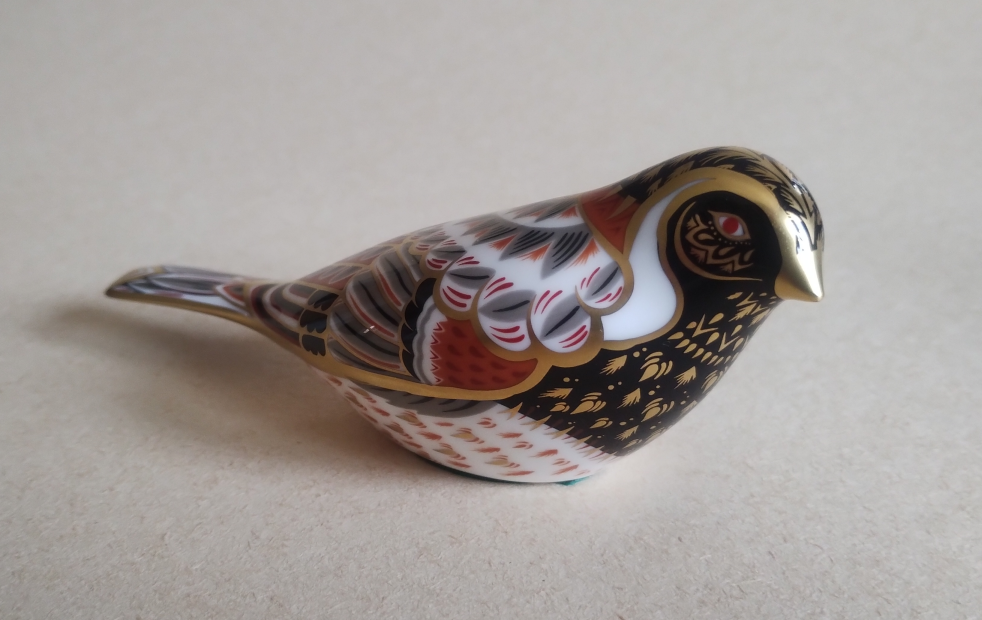
Growing an appreciation
As I became more familiar with Royal Crown Derby paperweights I realised just how good they were. They take the subject and, in the best examples, use the decoration style to represent not just the subject but also elements of their habitat and food. One of my favourites is the Kookaburra (an Australian member of the kingfisher family). The figure, with its hunched shoulders, large bill, and black eye-mask, perches on a tree above water, where fish swim.
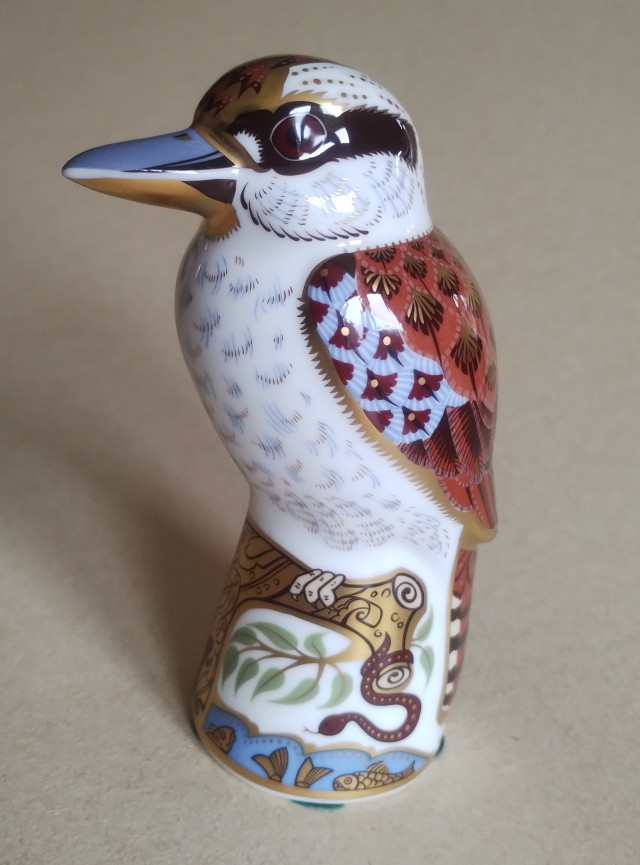
One of my favourites is the Kookaburra (an Australian member of the kingfisher family). The figure, with its hunched shoulders, large bill, and black eye-mask, perches on a tree above water, where fish swim.
Kookaburras, when sat, always have smug expression which is amplified by the black eye-mask. It makes them very easy to identify but also to anthropomorphise – an evil racoon in avian form. The Royal Crown Derby expresses this beautifully.
Imari ware
Royal Crown Derby paperweights are decorated in a style which is known in Britain as Imari. In essence, Imari describes a style of ceramics that originated in Arita, Japan. Imari is a very big subject, but the Wikipedia page on Imari ware is a good place to start. Imari porcelain decoration consists of a range of colored glazes, predominantly red and blue with black and gold outlines. The earliest examples arrived in the west towards the end of 17th century. In Britain, Imari porcelain became so popular that by the 18th century British manufacturers were copying the style and so much of what survives actually was home produced.
The Royal Crow Derby factory still produces a whole range of items using it’s versions of Imari. You can buy entire Imari dinner services from Royal Crow Derby, although with the amount gold leaf over-glaze decoration you’d be wise not to put it anywhere near a dishwasher. I suspect that the proud owners only use them for display purposes.
Royal Crown Derby Imari paperweights
Royal Crown Derby produced their first paperweights in the 1980s. Each paperweight is hollow and has a small hole in the base. The original paperweights actually were filled with sand. It was this that required the of plugging the filler hole with a stopper. We’ve had one of these original pieces, an owl, and it was distinctly heavy. I don’t know how long the sand filling continued but fairly soon it seems to have stopped. Paperweights for export were supplied without stoppers. This was to avoid the stoppers from “popping” in aircraft cargo holds.
Silver and Gold
The stoppers themselves tell you whether the paperweight was first or second quality. The seconds have a silver stopper, the firsts being gold. If you find a paperweight you like that has a silver stopper don’t be immediately put off. It’s very rare for the “fault” to be obvious and if you can’t find the fault a silver stoppered paperweight will usually be a bit cheaper.
However there are a couple of really important points to know be aware of:
Firstly, some of the paperweight ranges (for example the National Dogs and the Mythical Beasts candlesticks) were never fitted with stoppers. Thus a paperweight without a stopper this may not be a fault. Some collectors avoid paperweights without a stopper because they suspect they are second quality being passed off as first. This can happen but I would do some research before rejecting a paperweight you like.
Secondly, gold stoppers come in several different shaded of gold. I know this sounds odd but some are very clearly gold, whilst some take some looking at to decide they are gold rather than silver. The best I can say is that the silver stoppers always look very silver so in general if you’re not sure, then the stopper is almost certainly gold.
A collectors dream
More paperweights were designed following the initial success. This continues to this day. There are several hundred designs available now, with more produced each year. Some designs take an existing animal or bird shape and simply change the pattern, whilst some are wholly new.
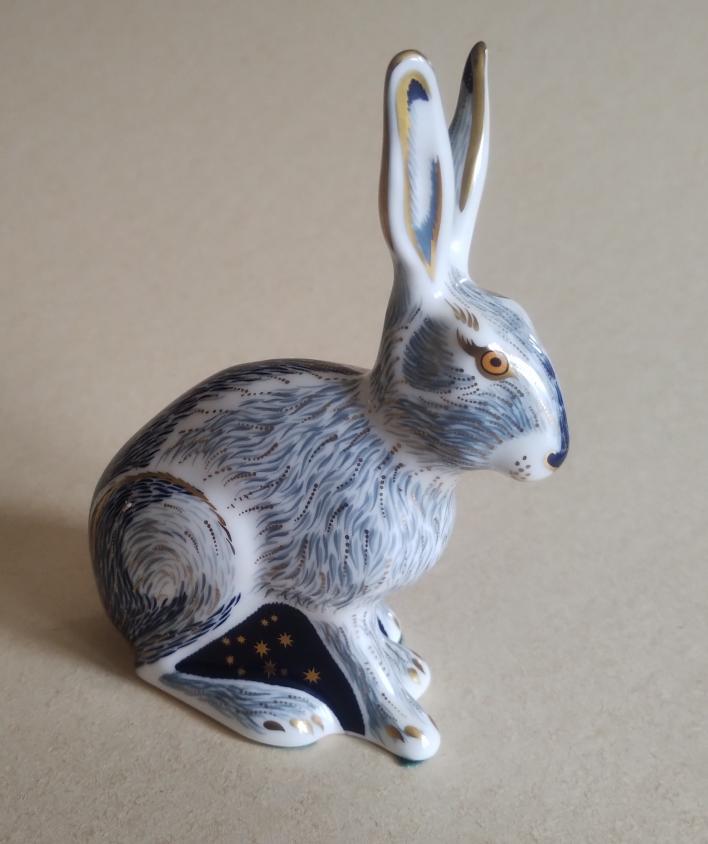
There is a collectors club which of course gets special editions. Each paperweight is issued with a certificate and these are limited in number. There are other special editions too. Certain retailers such as Goviers of Sidmouth have a few designs that that only they can sell. Thus the avid collector gets to chase down the rare and unusual designs.
It started with a duck
As we started to appreciate the Royal Crown Derby paperweights, particular ones kept standing out for us. We became very familiar with the penguin, puffin and beaver, but with a birthday coming up it was the mallard that started our collection.
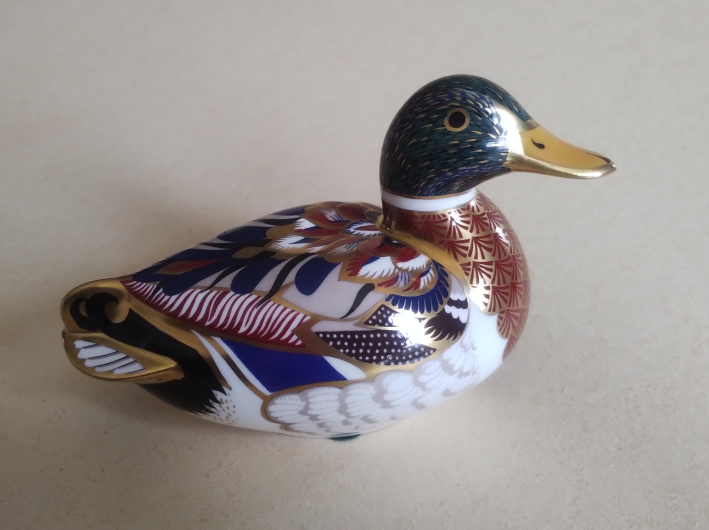
The mallard is one of the earlier designs and it remains, I think, one of the best. It’s a good size which allows for considerable detail in the pattern. The design, like the Kookaburra, well represents the smart, rather smug posture of a male mallard making it instantly recognisable.
The success of the mallard lead to a steadily growing band of animals and birds. I have to add that the collection really belongs to my wife although the alligator (which was rather more expensive than most) remains firmly mine. The alligator might go to a fair at some time but definitely not yet.
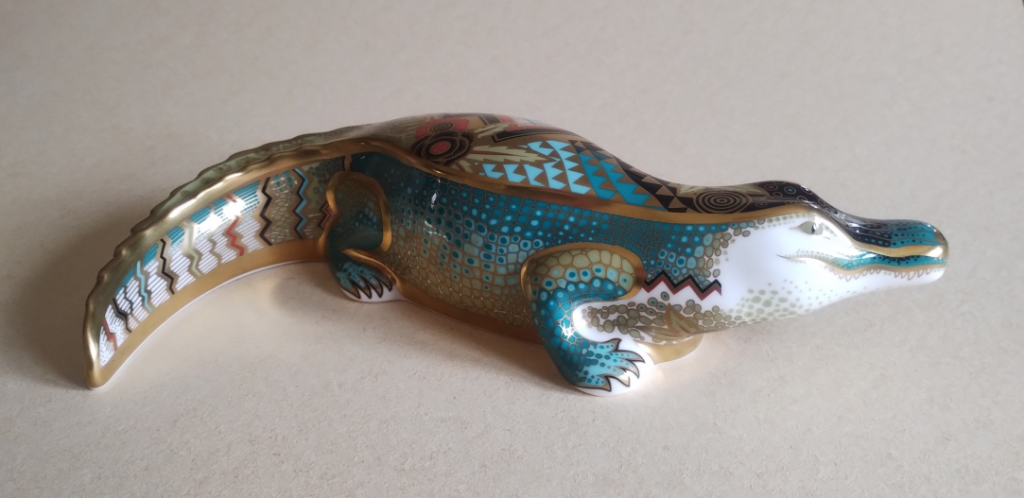
There are of course always more to collect and I think our collection has some way to go yet. So of course, at some stage, the question arises: Is it a good investment?
Are collections a good investment?
The popularity of collectable ceramics rises and falls over time. In general though once the price starts to fall, the decline is inexorable and rarely recovers. Lots of us have inherited a cherished collection, accumulated over many years, often at considerable cost, only to find that the resale value is depressingly low. Worse still, some collections become almost unsalable in a flooded market with a small pool of buyers. Antique shops, fairs and car boot sales are full of examples.
There is a rather depressing explanation for this. Collectors of any particular subject tend to be of about the same age. They age at the same rate and die at around the same time. If you inherit from a collector who happily lives to be a great age, you will probably be one of the last to market with your inheritance. This at least means you can find the prices easily but it’s rarely good news.
I never imagined myself writing about Elvis Presley, but Elvis memorabilia is currently a good example. I was recently chatting to a collector of anything Elvis related who told me that the quantity of Elvis stuff going through auction has been high in recent years but the prices have been fairly low. As a collector they were delighted of course, but it’s a sad reflection of the demise of late 1950s teenagers. If I was to bet, I’d say the same will be true of Beetles memorabilia in the next few years. If you want to make the most of a Beetles collection, I’d suggest you get on and sell it sooner rather than later!
What of Royal Crown Derby paperweights
What does the future hold for Royal Crown Derby paperweights? At the moment the market seems to be strong, although you can always find people who will tell you it’s not what it was. There are some very big collections coming to auctions, indeed we bought from one recently. However we meet lots of collectors at fairs. Collectors, being collectors, tend to be less keen to buy the commoner items but will pay more for the rarer ones. Just as heartening are the younger buyers who are being charmed by the paperweights and seem willing to spend enough to get a collection started. Thus we can still (hopefully!) find buyers across the range we have to offer.
It probably helps that Royal Crown Derby are still producing new designs and continue to actively promote them. This keeps each new generation of potential collectors interested with a sense of being able to buy new as well as vintage designs.
In the end though, does it matter if a collection loses much of its value? Of course to a dealer it does but really it’s the collectors that matter. So long as a collector has enjoyed the experience of collecting and admiring I don’t think a drop in value really matters. It may be a disappointment to someone inheriting the collection but that shouldn’t discourage people from collecting. A cabinet shelf full of cheerful, beautiful, colourful Royal Crown Derby paperweights will always be worth a something to someone.